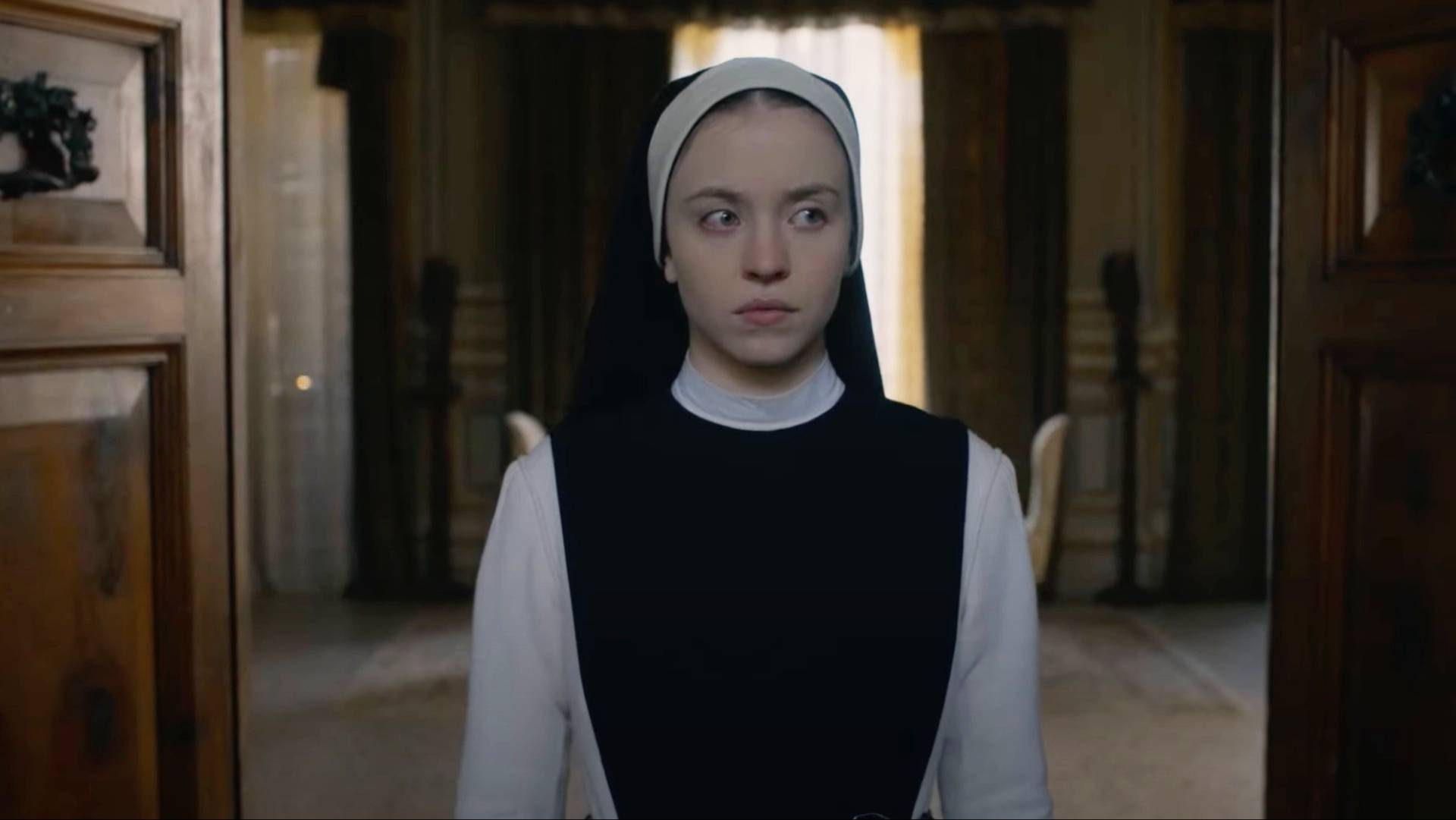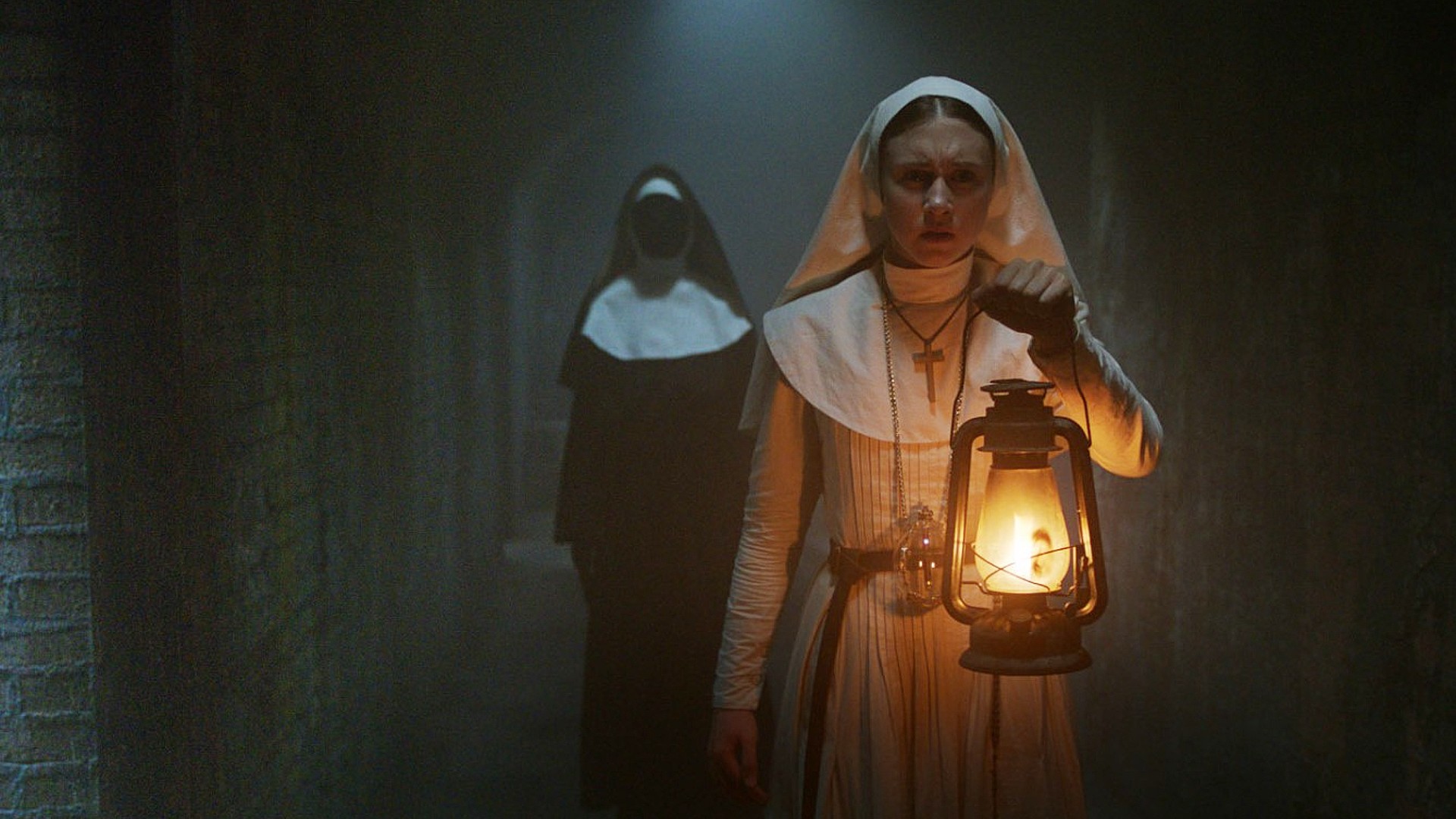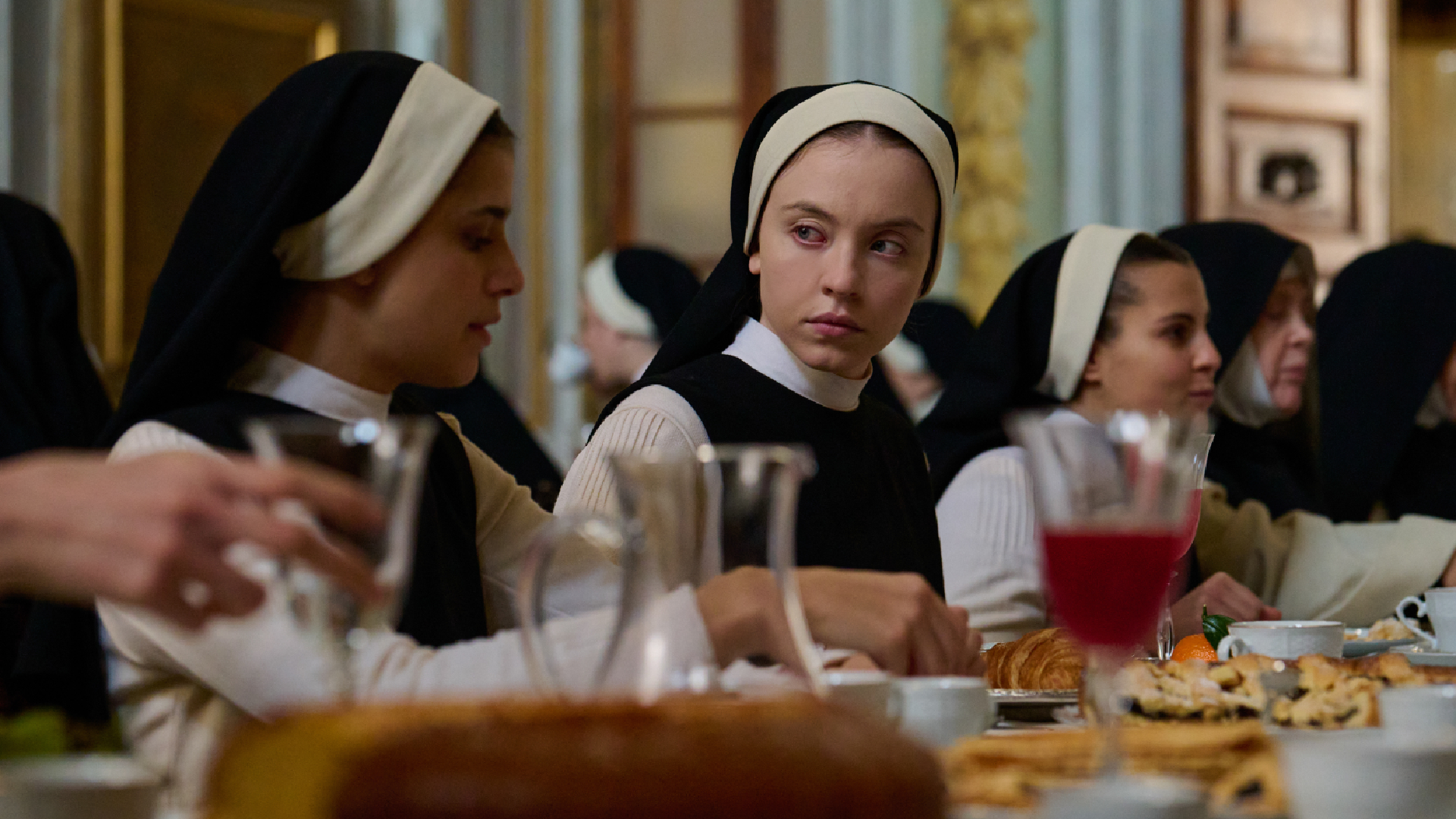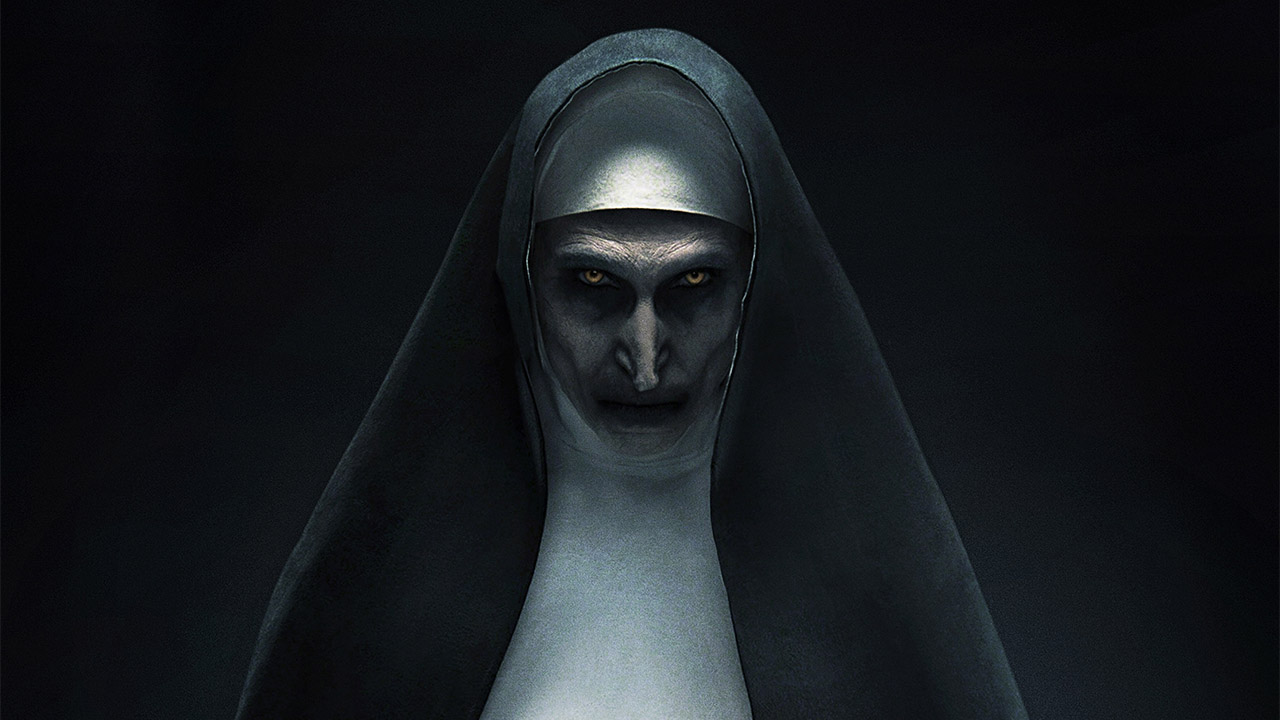
New horror movie Immaculate hits our screens today with Euphoria star Sydney Sweeney in the lead role as Cecilia, a young woman who discovers unspeakable horrors when she journeys to the Italian countryside. Just weeks later, The First Omen arrives in theaters, focusing on a woman who begins questioning her faith when she uncovers a terrifying conspiracy concerning the church. Meanwhile the cryptic teaser trailers for Oz Perkins’ Longlegs, set for release in July in the US, have left much of the horrors within to the imagination, following FBI Agent Lee Harker who is assigned to an unsolved serial killer case that takes an unexpected turn. But what links all of these horror films? The answer is the presence of nuns within their terrifying narratives.
The existence of nuns within genre cinema is far from unusual. Religious belief exists as a symptom of fear as we are aware our lives are vulnerable and chaotic, with religion bringing answers to our greatest fears and mysteries. Horror films often center around battles of good and evil, with religion taking up residence at both ends of the spectrum, offering nuanced explorations of multiple faiths across the decades. And one trope that has remained constant is that of the nun, which more often than not is a ‘scary nun’ haunting our nightmares.
Nun's the word

But what is it about them that sends shivers running down audience’s spines? Franciscan Sister Pauline Dempsey, from Kilsyth, suggests that the classic representation of the strict nun and historic crimes within the church may have contributed to their prominence in horror. She says: “I think there's a mystery about the kind of life that people in the church lead. There’s also a history of nuns as quite formidable characters dressed in this strange stuff. I think maybe what nuns wore in the early days had a part to play in that - the swishing of their habits and clicking of rosary beads. No hair is showing, only their face under the white part of their habit.”
Even before the first moving picture film, nuns were featured in folk tales, including the 1300s legend of Borley Rectory, which tells of a monk from the monastery and a nun from a nearby convent having an affair. When their romance was discovered, it is said that the monk was executed and the nun was bricked into the walls of the rectory itself. But this isn’t localised to English myth, with reports going back to the early 1630s of a convent of nuns in Loudun, France, succumbing to alleged demonic possession. Through the centuries, tales of nuns embroiled in sadism and satanic acts behind closed doors were common - just in time for the turn of the 20th century and the invention of cinema.
I think there's a mystery about the kind of life that people in the church lead
Franciscan Sister Pauline Dempsey
In 1922, director Benjamin Christensen released Haxan, a silent film blending documentary with fiction as it explores the history of witchcraft and satanism, with a devil tempting nuns to commit terrible sins. Black Narcissus followed in 1947, with Deborah Kerr and Kathleen Byron playing two nuns within a convent facing rising tensions, eventually spilling over into insanity and lust. By the time the 1970s rolled around, the trope of the corrupted nun had become so popular we entered the age of the ‘nunspoitation’ film, with the release of Killer Nun, The Devils, and Satanico Pandemonium. These films, which continued through to the '80s and '90s, often blurred the lines between horror and sexuality, seeing nuns corrupted by the devil to engage not only in violent acts but also sexual ones.
An age of repression

Daniel Sheppard, visiting lecturer in films at Birmingham City University with an interest in gender and sexuality in cinema as well as horror studies, shares how our attitude towards intimacy and censorship on screen adds to the fear we feel about nuns. He states: "The first thing that you associate with nuns is the idea of repression. And whenever you think of nuns in pop culture, it always comes down to 'you don't have sex'. When it comes to being a nun, I'm sure you have to repress many things within yourself. Sometimes, the representation can be more positive, in that it represents the horror of repression itself, whereas other films are very much invested in the repression of female sexuality. You can associate nuns in one of two ways then when you think in terms of sex and repression, because you can think about a nun in a very masochistic position, especially when you think about histories of sexual abuse within the Catholic Church. There's direct cause and effect there between men in power and vulnerable women who were simultaneously dealing with repression. But the flip reverse of that is you can see nuns ending up transcending this masochistic subject position, where they then overcompensate for all of this inner turmoil and become sadistic."
The current slew of films and TV shows shifts from the corruption of a ‘pure’ and ‘virginal’ nun to the haunting ‘evil nun’, as seen in the record-breaking The Conjuring series and its spin-off, The Nun. American Horror Story: Asylum, Agnes, Prey For The Devil, and Veronica have all featured demonic nuns in their narrative, sparking fear among audiences. Despite their rising prominence in horror, mystery surrounds nuns, with them becoming a rarer sight in public. The number of nuns worldwide peaked at 180,000 in 1965, and this had more than halved by 2010.
Nuns are almost seen as human beings that happen to come from another planet
Peter Laws
Peter Laws - author, paranormal investigator, and ordained reverend - theorises that what we can imagine about nuns due to this lack of knowledge helps fuel our fear. He says: "Nuns are almost seen as human beings that happen to come from another planet. And by that, I mean, they have a different worldview. So instantly, there's a sense of inherent mystery, disconnect, and uncanny valley."
Additionally, he reflects on how the corrupt nun trope could reflect our societal anxiety toward religion, adding: "When you see these nuns corrupted, it’s the sense of the church falling to the devil. We may have forgotten about the church, but we often go to the church in horror films for help. When you go there and the nuns are the corrupt ones, the message is that there’s nowhere you can go. This reflects real life in that we have seen plenty of clergy people corrupt and abuse, and so it reflects society’s disappointment in the institution of religion and its hypocrisy."
We've only just be-nun

The sacrilegious world of nunsploitation films has blossomed from its origins in spooky fables designed to scare those sitting around a campfire, to a mainstay in cinema as they scream their way through monasteries pursued by demons - sometimes, even becoming one.
The representation of nuns is varied within horror cinema as our cultural attitudes and anxieties surrounding religion have changed. Revelations of historic sexual abuse within the Catholic Church have given rise to a fear of religious figures and their capabilities, while historic tales of strict nuns within schools have aided toward an authoritarian view of the character. And with the 2024 film slate chock full of religious horror, the trope of the scary nun is showing no signs of hanging up its rosary beads.
Immaculate is out in theaters worldwide now, The First Omen will release on April 5, and Longlegs will hit US screens on July 12.
To stay up to date with the latest on all the best upcoming horror movies, check out our guide.







